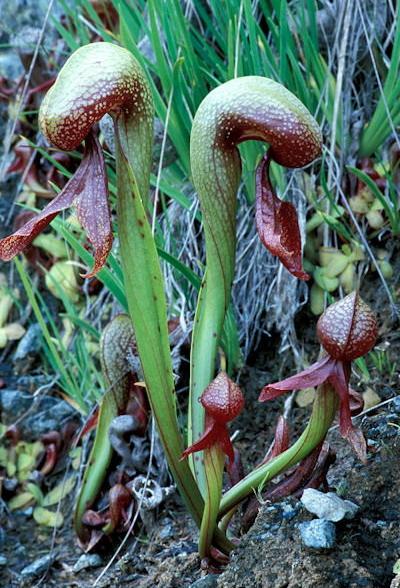Mysterious Carnivorous Plant Animal December 19, 2017
Author: Beach Combing | in : Modern , trackbackHere is a bit of gossip that span through the European press in 1852, a good twenty years before Darwin wrote his Insectivorous Plants.
According to some Italian journals, a new organised being has been discovered in the interior of Africa, which seems to form an immediate link between vegetable and animal life. This singular production of nature has the shape of a spotted serpent. It drags itself along on the ground; instead of a head, it has a flower, shaped like a bell, which contains a viscous liquid. Flies and other insects, attracted by the smell of the juice, enter into the flower, and are caught by the adhesive matter. The flower then closes, and, remains shut until the prisoners are bruised and transformed into chyle. The indigestible portions, such as the head and the wings, are thrown out by two aspiral openings. The vegetable serpent has a skin resembling leaves, a white and soft flesh, and, instead, of a bony skeleton, a cartilaginous frame filled with yellow marrow. The natives consider it a delicious food.
Beach wonders if this could possibly be based on a real carnivorous plant: but, if so, which one? A flower shaped like a bell is just fine: but this creepy little number has flesh and ‘drags itself along on the ground’. Can anyone help: drbeachcombing AT gmail DOT com
Craig M writes in 30 Dec 2017: Almost positive this is a description of the carnivorous Cobra lily Darlingtonia californica formally described within a year of this story. Unlike the outlandish description the plant is not native to Africa but to California.

Chris S, 30 Dec 2017: In South America exists Socratea exorrhiza, or Walking Palm. Mimosa pudica, or shameplant, moves on a human timescale rather than a redwood’s patient timeframe. Lavatera cretica knows the direction of sunrise and twists itself to greet the morning’s first rays. Plants can also count, communicate via scents and fragrances, and they can see despite a lack of discrete brains, nerves, or eyes. It’s only recently people, and more importantly scientists, are realizing animals aren’t mere meat machines which exist for our pleasure and daily bread. Animals lead rich inner lives, express emotions, communicate rather than signal, so why is it so strange a plant could be like an animal or a human? It’s because they’re so alien and unlike anything we can imagine. Sally Davies in her Aeon article, The Minds of Plants, mentions the concept of zoochauvinism and plant blindness illustrating humanity’s disregard of our green neighbors simply because they’re not like us. I’d say a mysterious carnivorous plant animal can be considered far more likely with the advances in botany than, Loren Coleman forgive me, bigfoot. And for you and your readers, check out The Minds of Plants, Plants Can Count and Communicate Without a Brain for a greater appreciation of these familiar aliens among us.



